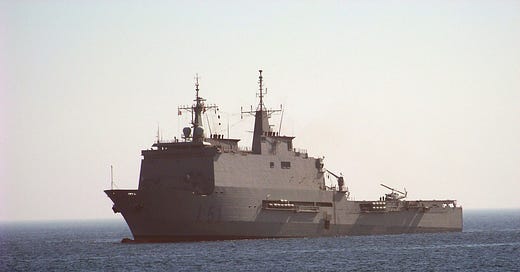Europe is scrambling to boost its militaries but Spain is an exception. Its defence spending was at just 1.28 percent last year — the lowest in NATO.
Prime Minister Pedro Sánchez has defended Madrid’s record, saying Spain is a “reliable partner”, and military spending is going up quickly in line with Sánchez’s target of 2 percent by 2029.
The problem is that this target is already anachronistic: NATO leaders decided on it at the 2014 Wales Summit following Russia’s annexation of Crimea. As shocking as that moment was, it now seems a little quaint after Russia’s 2022 full-scale invasion of Ukraine and Donald Trump casting doubt upon the US’s security commitments to Europe.
Sánchez has little room for manoeuvre as his leftist coalition partners are determined to prevent any cuts to welfare or environmental spending. He already failed to pass his budget in 2024 and it looks tricky this year year.
Trying to get around the domestic obstruction, the PM called last week for an EU army funded by EU-wide debt bonds. But that also looks impossible, because a) everyone knows most member states don’t want to cede control of their militaries, b) EU Foreign Affairs Commissioner Kaja Kallas has explicitly ruled out an EU army, saying they instead need “27 European armies that are capable”, basically meaning funded with well over 2 percent of GDP per country, c) pro-Russian Hungary could block it, and d) any repeat of the one-off common debt creation for Covid recovery is anathema to northern Europe. Expect to see much better pooling of military resources across Europe, but no EU army.
Beneath the immediate political factors lie long-term causes of Spain’s low defence spending. Paradoxically, it was Francisco Franco, an army man to the core, who set Spain on this pathway. With a Cold War military alliance with the US looking after Spain’s external security, the Caudillo instead focused resources on internal threats to his regime, funnelling money towards the police and civil guard as they stamped out his domestic opponents, notably Basque and Catalan nationalists. Such was his high standing amongst the military establishment, Franco had nothing to lose from doing so.
As Spain’s economic boom coincided with the West’s holiday from history in the 1990s and 2000s, Madrid had little incentive to ramp up defence spending. It languished further after Spain reeled from the 2008 financial crash, standing at just 0.9 percent when Russia annexed Crimea. And since the likes of Germany were slow to raise their tiny military budgets after what should have been a turning point, faraway Spain could be forgiven for stepping up inadequately. Especially seeing as Ukraine is on the other side of the continent.
To be fair, Spanish defence spending looks efficiently spent, particularly its air force and navy. The former boasts some 70 Eurofighter Typhoons. The latter possesses a handful of impressive amphibious assault ships. That’s while Spain’s army does its bit defending NATO’s eastern flank, taking over command of NATO’s Slovakia battlegroup in the summer of 2024.
Within the budgetary constraints Sánchez has allocated 1 billion euros per year in military aid for Ukraine, including hefty donations from Spain’s armoury of German-made Leopard tanks, which are well-suited to winter combat in Ukraine. He has also provided moral support with multiple visits to Kyiv since Russia’s full-scale invasion.
But unless minds change in European capitals about collective borrowing, Sánchez will remain at the mercy of his recalcitrant coalition partners when it comes to defence spending.
The only other way around it would be a deal with the conservative Popular Party; the opposition bloc favours increased defence spending. However, partisan antagonism between Spain’s traditional left and right outfits runs high, and such a deal with the left’s enemy would upend Spanish politics and endanger Sánchez’s grip on power. So that solution is unlikely, too.



